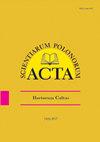The effect of nitrogen fertilization on yield and macronutrient concentrations in root chicory (Cichorium intybus L. var. Sativus Bisch) and the health status of plants
IF 0.6
4区 农林科学
Q4 HORTICULTURE
引用次数: 0
Abstract
The effect of N fertilization on the health status of chicory plants, yield and the content of dry matter and macronutrients in chicory roots was determined in the study. Three root chicory cultivars, Polanowicka, Orchies and Chrysolite, were grown in a plot experiment. Three levels of topsoil N fertilization were applied before sowing: 0, 80 and 120 kg ha–1. The severity of leaf diseases was estimated during the growing season. Root yield, agronomic and marginal N-use efficiency, DM content and macronutrient concentrations in roots were calculated after harvest (10–20 October). The symptoms of powdery mildew, gray mold and leaf spot on chicory leaves were significantly least severe in the unfertilized treatment. The highest yield (83 Mg ha–1) was obtained in 2017, in cv. Chrysolite without N fertilization. Root yield decreased in response to the application of N fertilizer at both rates. A minor increase in yield was observed only in cv. Polanowicka in N-fertilized treatments in 2017, and in cv. Chrysolite fertilized with 80 kg N ha–1 in 2018. Root yield was negatively correlated with disease severity during the growing season. The DM content of chicory roots (mean values for years of the study, cultivars and N rates) was similar in all treatments. N fertilization induced changes in the content of N, K, Mg and S in chicory roots of the analyzed cultivars. The application of N fertilizer had a beneficial influence on the N content of roots in all cultivars.施氮对菊苣根产量、宏量营养素浓度及植株健康状况的影响
研究了施氮对菊苣植株健康状况、产量以及菊苣根干物质和大量营养物质含量的影响。在小区试验中种植了三个根菊苣品种,Polanowicka、Orchies和Chrysolite。播种前施用三个水平的表层氮:0、80和120 kg ha–1。在生长季节估计了叶片病害的严重程度。收获后(10月10日至20日)计算根系产量、农艺和边际氮利用效率、DM含量和根系中大量营养素浓度。菊苣叶片上的白粉菌、灰霉菌和叶斑症状在未受精处理中最不严重。最高产量(83 Mg ha–1)是在2017年,在没有施氮的条件下,在金花中获得的。根产量因施用两种速率的氮肥而降低。仅在2017年施氮处理的Polanowicka和2018年施氮80 kg N ha–1的Chrysolite中观察到产量略有增加。在生长季节,根产量与病害严重程度呈负相关。菊苣根的DM含量(多年研究的平均值、品种和施氮率)在所有处理中都是相似的。施氮使菊苣根中N、K、Mg和S含量发生变化。氮肥的施用对所有品种根系的氮含量都有有利影响。
本文章由计算机程序翻译,如有差异,请以英文原文为准。
求助全文
约1分钟内获得全文
求助全文
来源期刊
CiteScore
1.30
自引率
14.30%
发文量
61
审稿时长
4-8 weeks
期刊介绍:
In Acta Scientiarum Polonorum Hortorum Cultus we publish original research papers and review articles containing new and significant information on broad aspects of horticulture and related disciplines. The papers are published in English only, in six issues yearly.

 求助内容:
求助内容: 应助结果提醒方式:
应助结果提醒方式:


